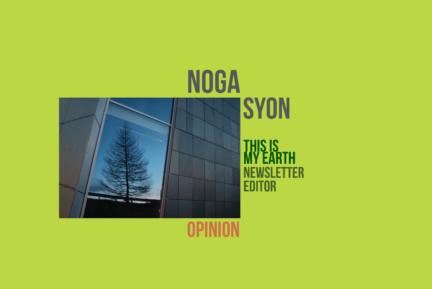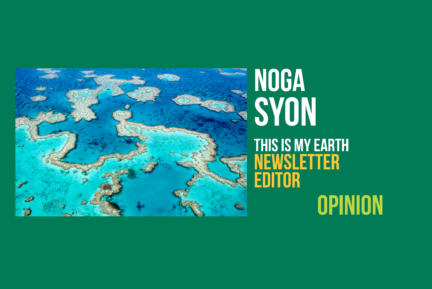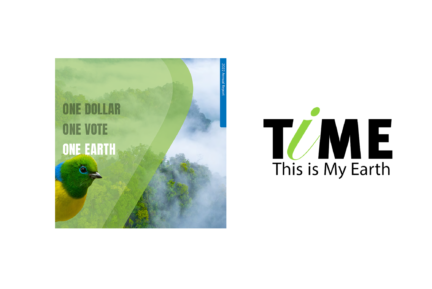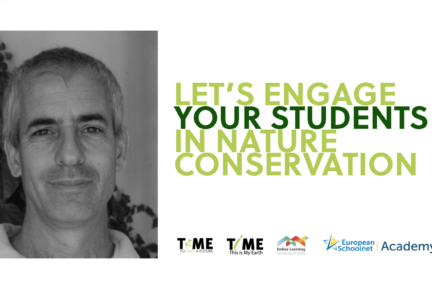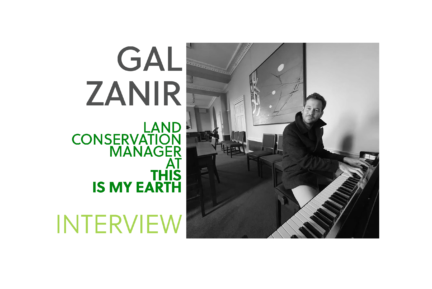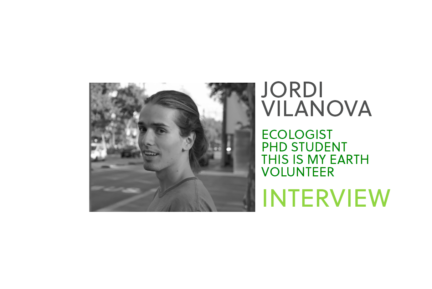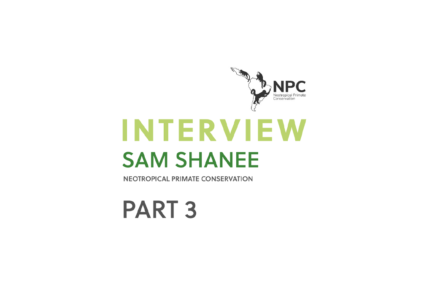Life and animals adapt to new situations. In fact, one of the most memorable scenes in the movie (and the book) Jurassic Park occurred just before the characters learned that the cloned dinosaurs, although all female, had found a way to reproduce. In what later became an iconic phrase, which then turned into a viral meme, the mathematician says :
“If there is one thing the history of evolution has taught us it’s that life will not be contained. Life breaks free, it expands to new territories and crashes through barriers, painfully, maybe even dangerously, but… life finds a way.”
Does it, really? And if it does… can we hope that wildlife becomes accustomed? Can it adapt to habitat loss and climate change, rather than worry about preserving it as it is?
The short answer is yes — animals do adapt. Evolution is a story of constant change; living things never remain in a static, motionless condition. But this does not mean that conservation efforts are a futile, naïve effort. On the contrary.
This past month, a UN summit on biodiversity loss took place in Montreal. Awareness increases. It is important to stop and ask if and how animals adapt to changing ecology. And why we should care at all.
Metamorphosis
Last month, the New York Times published a detailed infographic. There one could see the many species that have lost between a third and nearly two-thirds of their habitat. But what do these species do when they lose their home, or when it becomes too hot?
The ability of wildlife to adapt is nothing short of breathtaking, and it is not always connected with human intervention. Children learn from a young age about the chameleon’s ability to change colors. However not many know about its relative, the marine iguana in the Galápagos, “which can increase their body size up to 20 percent in response to warm currents in the Pacific Ocean.
In most cases, adaptation happens over generations and not by the same individual. While in colder climates, animals are known to have bigger body sizes to preserve heat. In warmer climates, they often have larger beaks, ears, and tails relative to the animal’s overall size.
These larger appendages are ways of regulating body temperature, as a larger surface area aids in heat dissipation. This theory has led scientists to examine whether animals have “shape-shifted” due to climate change (comparing animals today with museum specimens).
And indeed they have: bird bills especially were found to have increased in size in correlation with temperature rises in the birds’ habitat. For example, the bill sizes of Australian parrots (the yellow and turquoise Mulga Parrot and the red-headed Gang-gang Cockatoo) have increased since 1871, as average summer temperatures in Australia have risen.
Mammals like shrews and bats, too, were shown to have increased their tail, ear, leg, and wing sizes in correlation with warming temperatures.
But when habitats don’t only heat but also shrink or become uninhabitable (usually due to deforestation, pollution, or overexploitation). The most obvious course of action seems to be migration. Indeed, many species have moved northward or southward, and even some plants have changed altitudes and latitudes in recent years.
European Purple Emperor butterflies extended their territory from Denmark to southern Finland between 1983 and 1991 — over 500 kilometers in less than a decade! Migration may be beneficial to migrating species but may also pose long-term dangers to other species and populations. Migration may more stress to the new habitats and creating a potentially catastrophic chain of events.
The introduction of each alien species into a habitat is a possible beginning of another life-or-death struggle between native or invasive species, which can end in many ways. Areas at risk of malaria, leishmaniasis and dengue have expanded in recent years due to insect migration in Colombia, Ethiopia, and the United States.
Apocalyptic paradise
Halfway through the 20th century humans managed to crack open the atom nucleus, and the nuclear age began. Alongside the tragedy caused by nuclear accidents and explosions, we have had rare chances to see fast-paced evolution in a contained area.
The impact of the Hiroshima and Nagasaki bombs on the local environment and species was not well studied. However, the exclusion zone around the Chernobyl power plant, where reactor 4 exploded in 1986, has turned into a lab of sorts for studying conservation, adaptation, and of course, the impact of nuclear radiation.
In the absence of human activity, many species of animals and plants have found a haven there: in fact, populations of wolves, roe deer, elk, and boar exploded. Lynx, bison, storks, and bears began to roam the 2,600 square kilometer range around the power plant, and pine trees were naturally replaced by diverse forests that are more resilient to fires and sequester more carbon. The area was even chosen as the site to rewild Przewalski’s Horses in 1998, after they became extinct in the wild.
In a way, the exclusion zone has become symbol of natural regeneration; photos of the abandoned cities of Pripyat and Chernobyl now reclaimed by nature look like a post-apocalyptic wasteland or wildlife heaven, depending on your perspective. Following research on the long-term effects of the radiation around Chernobyl, researcher Jim Smith said, “Our conclusion was that human occupation had a much bigger impact on the ecosystem than the world’s worst nuclear accident.”
In the exclusion zone around the Fukushima Daiichi power plant, which failed in 2011, researchers from the University of Tokyo have set up microphones. They record the sounds of the animals and their surroundings, delivering information for ecological studies. This technology allows researchers to monitor changes to the area since humans left and to track the expansion of wildlife without interfering. Like Chernobyl, there is abundant wildlife here too: raccoon dogs, Japanese macaques, serows, and hares took over abandoned houses, and rice fields were replaced by grass and willow trees.
DNA damage is at the cornerstone of a high risk game
So when it comes to evolution it feels like playing dice with the universe, because life and animals adapt to new situations.
The spread of flora and fauna, by itself, does not mean that animals do not suffer from the constant exposure to radiation — they do: scientists who study contaminated areas have reported higher frequencies of tumors and physical abnormalities, sperm damage, and declines in some populations, particularly insects and spiders. It was also discovered that some species have in fact begun to produce higher levels of antioxidants that protect them from DNA damage! We do not know yet, however, what the long-term effects on animals’ DNA will be, as scientists estimate the consequences of radiation will continue for centuries to come.
Playing dominos
When we think about animals’ ability to adapt, two lines of reasoning are very alluring. According to one, we do not need to worry about conservation: nature can take care of itself and we should leave it to natural selection to work around humans’ continued expansion and exploitation of natural resources. The other viewpoint says that the post-apocalyptic scenes from Chernobyl and other deserted locations are an inspiring, almost biblical Noah’s Ark vision of the future: humans will be gone, and the natural world will grow on top of our remains.
The truth is that ecosystems are interconnected. We are on one small planet, and any harm that comes to one species triggers movement and impacts other species. The fall of one domino — be it DNA changes due to nuclear radiation, migration, or denser, more crowded habitats — will topple the domino beside it, and likely the one after that and the one after that.
The destruction of habitats and growing pressure in existing ones, for example, creates fertile ground for the transfer of pathogens from one species to another and the development of epidemics or pandemics. It is likely that many species will be able to adapt and survive in the case of the harshest human-made catastrophe. But we don’t know which, and we don’t know what the world will be like after. “Life will not be contained,” Jurassic Park tells us. This doesn’t only mean that life will regenerate, but also that any attempt to control, limit, or channel a living thing in a particular direction is unpredictable.
Aldo Leopold, the father of wildlife ecology, developed “the land ethic” in 1949. In it, he claimed that our responsibility for the ecosystem and biodiversity goes beyond the commitment to future human generations and transcends the likelihood of species to adapt and change:
A land ethic changes the role of Homo sapiens from conqueror of the land-community to plain member and citizen of it. It implies respect for his fellow-members, and also respect for the community as such.
A land ethic changes the role of homo spines from conqueror of the land-community to plain members and citizen of it. It implies respect for his fellow-members, and also respect for the community as such.
Aldo Leopold, A sand county Almanac and sketches here and there, 204.
As such is the key term here. We now know that plants will grow and animals will roam no matter what we do. But ethically speaking, says Leopold, we should not view the world from the perspective of infinity, but from the perspective of a community member: taking care of our own community and world as they are, and treating every little snail, butterfly, giraffe, and human as vital members of this community, each deserving of a home for their own sake.
To sum up, playing dice with the universe can put life adaptation at risk.

Sources
Armenteras-Pascual, Dolors. “Understanding species adaptation to disturbances: an opportunity to survive the current biodiversity crisis?” Ecology and Evolution. Published April 16, 2019. Accessed December 2022. https://ecoevocommunity.nature.com/posts/48015-understanding-species-adaptation-to-disturbances-an-opportunity-to-survive-the-current-biodiversity-crisis
Cho, Renee. “What Helps Animals Adapt (or Not) to Climate Change?” State of the Planet. Published March 30, 2018. Accessed December 2022. https://news.climate.columbia.edu/2018/03/30/helps-animals-adapt-not-climate-change/
Editorial. “Shifting habitats”. Nature Climate Change 10 (2020): 377.
Einor, D. et al. “Ionizing radiation, antioxidant response and oxidative damage: A meta-analysis”. Science of The Total Environment 548-549 (1 April 2016): 463-471.
Fearon, Robin. “Shape-Shifting is How Some Animals Adapt to Climate Change”. Discovery. Published November 5, 2021. Accessed December 2022. https://www.discovery.com/nature/shape-shifting-is-how-some-animals-adapt-to-climate-change
Galván, Ismael et al. “Chronic exposure to low-dose radiation at Chernobyl favours adaptation to oxidative stress in birds”. Functional Ecology 28 (2014): 1387-1403.
Leopold, Aldo. A Sand County Almanac and Sketches Here and There (Oxford: Oxford University Press, 1989 [1949]).
Ludovici, Gian Marco. “Adaptation to ionizing radiation of higher plants: From environmental radioactivity to Chernobyl disaster”. Journal of Environmental Radioactivity 222 (October 2020): 106375.
MacLean, Sarah A. and Steven Beissinger. “Species’ traits as predictors of range shifts under contemporary climate change: A review and meta-analysis”. Global Change Biology 23:10 (October 2017): 4096-4105.
Main, Douglas. “Photos: A decade after disaster, wildlife abounds in Fukushima”. National Geographic. Published March 11, 2021. Accessed December 2022. https://www.nationalgeographic.com/animals/article/wildlife-abounds-in-fukushima-nuclear-exclusion-zone
Mousseau, Timothy A., et al. “Genetic and Ecological Studies of Animals in Chernobyl and Fukushima”. Journal of Heredity 105:5 (September-October 2014): 704-709.
National Wildlife Federation. “Wildlife in a Warming World”. 2013. https://www.nwf.org/~/media/PDFs/Global-Warming/Reports/NWF_Wildlife-Warming-World_Report_web.ashx
Osterloff, Emily. “Marine iguanas: the incredible shrinking lizards of the Galápagos”. Natural History Museum. https://www.nhm.ac.uk/discover/shrinking-galapagos-marine-iguanas.html
Ryding, et al. “Shape-shifting: changing animal morphologies as a response to climatic warming”. Trends in Ecology and Evolution 36:11 (2021): 1038-1048.
Ryding, Sara and Matthew Symonds. “Animals are changing their body shapes to cope with climate change”. World Economic Forum. Published September 13, 2021. Accessed December 2022. https://www.weforum.org/agenda/2021/09/climate-change-animals-global-warming-shape/
UN Environment Program. “How Chernobyl has become an unexpected haven for wildlife”. Published September 16, 2020. Accessed December 2022. https://www.unep.org/news-and-stories/story/how-chernobyl-has-become-unexpected-haven-wildlife
Williams et al. “Habitat loss on seasonal migratory range imperils an endangered ungulate”. British Ecological Society 2:1 (January-March 2021).
Zimmer, Katarina. Scientists can’t agree about Chernobyl’s impact on wildlife. Knowable Magazine. Published July 2, 2022. Accessed December 2022. https://knowablemagazine.org/article/food-environment/2022/scientists-cant-agree-about-chernobyls-impact-wildlife











